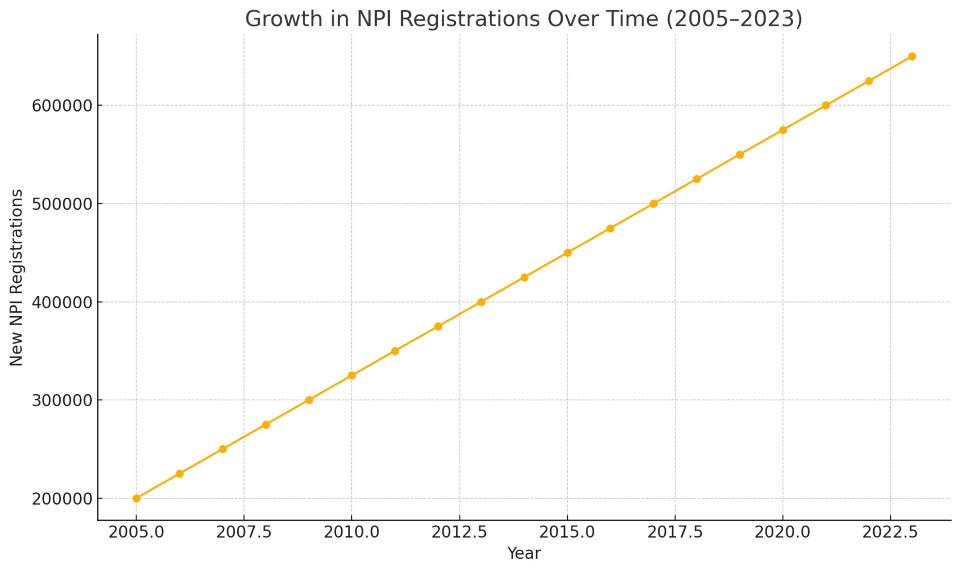In the U.S. healthcare system, administrative efficiency and accountability hinge on one key tool: the National Provider Identifier (NPI). Every healthcare provider, from solo practitioners to sprawling health systems, uses this 10-digit number to bill insurance, prescribe medication, and verify credentials.
Yet for something so widely used, many outside the healthcare industry don’t fully understand what it is—or why it matters so much.
This article breaks down what an NPI is, how it's used, and why it’s essential to the function of American healthcare.
What Is an NPI Number?
An NPI number is a 10-digit numeric identifier assigned to healthcare providers by the Centers for Medicare & Medicaid Services (CMS). It was introduced under the Health Insurance Portability and Accountability Act (HIPAA) of 1996, and it became fully operational in 2007.
It’s a national, standardized ID used across all health plans and government payers. The NPI:
-
Never changes (even if you move states or change employers)
-
Doesn’t carry personal info like your specialty or state license
-
Replaces older identifiers like the UPIN (Unique Physician Identification Number)
There are two types of NPIs:
-
Type 1 (Individual NPI): Assigned to individual healthcare providers.
-
Type 2 (Organizational NPI): Assigned to healthcare organizations, such as hospitals, clinics, labs, and nursing homes.
Why Was the NPI Created?
Before the NPI, providers often had multiple ID numbers depending on the insurance company or region. This created a fragmented, inconsistent system full of errors, duplicates, and administrative waste.
The NPI was designed to:
-
Simplify provider identification
-
Reduce paperwork
-
Improve claim processing
-
Enable cleaner data in electronic health systems
-
Cut down on fraud and abuse
It’s one of many efforts to streamline the vast and complex U.S. healthcare system.
How NPIs Are Used in the Healthcare System
The NPI plays a central role in administrative, billing, and clinical functions. Here’s a breakdown of where it fits:
Without an NPI, providers can’t legally submit claims or operate in most regulated environments.
Who Needs an NPI?
The CMS requires all “covered entities” under HIPAA who transmit health information electronically to have an NPI. This includes:
-
Physicians (MD, DO)
-
Physician assistants and nurse practitioners
-
Dentists and orthodontists
-
Therapists (physical, occupational, speech)
-
Clinical psychologists and social workers
-
Pharmacists
-
Hospitals, urgent care centers, and clinics
-
Labs, diagnostic centers, ambulance companies
-
Home health agencies and hospice providers
Even providers not directly submitting claims—such as a physician working in a group practice—still need an NPI for internal records, referrals, or prescription tracking.
How to Apply for an NPI
Getting an NPI is free, and the process is relatively simple.
-
Go to the official National Plan and Provider Enumeration System (NPPES) site:
nppes.cms.hhs.gov
-
Fill out the application with:
-
Full legal name
-
Business and mailing address
-
Taxonomy code (your provider specialty)
-
Social Security Number or Employer Identification Number (EIN)
-
State license information
-
Submit the form and wait—most NPIs are issued within 10 business days.
NPI vs. Other Identifiers
Here’s how the NPI compares with other common healthcare provider numbers:
The NPI doesn’t replace licenses or DEA numbers—it complements them as part of the identity verification stack.
Growth of NPI Registrations Over Time
Since its launch, the NPI registry has grown steadily as the healthcare workforce has expanded and more organizations have adopted digital health systems.

The table below shows estimated new NPI registrations by year (illustrative data):
Electronic health record (EHR) adoption, the rise of telehealth, and shifts in healthcare roles (like the growth of nurse practitioners and physician assistants) all contribute to the steady increase.
Common Issues and Risks
While NPIs are effective, there are a few caveats:
-
Data Accuracy: The NPI registry relies on self-reported information. If a provider moves or changes credentials and doesn’t update their profile, systems may contain outdated data.
-
Fraud Risk: Because NPIs are public, bad actors can attempt fraudulent billing. That’s why payers use multiple checks to verify legitimacy.
-
Lack of Granularity: An NPI doesn’t tell you a provider’s quality, experience, or board certification. It’s purely an identifier—not a stamp of approval.
Real-World Example: A Day in the Life of a Provider
Let’s say you’re a nurse practitioner joining a large health system.
-
You submit your NPI as part of your credentialing process.
-
You begin seeing patients—each chart in the EHR links to your NPI.
-
When you order labs or refer a patient to a specialist, your NPI is included.
-
Your e-prescriptions also include your NPI for pharmacy verification.
-
At the end of the week, your services are billed to insurers—again, under your NPI.
At every stage, this number ties your work into the broader healthcare system in a consistent, trackable way.
The NPI number may seem like a simple administrative detail, but it’s a linchpin in the U.S. healthcare machine. It powers the systems behind the scenes: billing, prescriptions, referrals, audits, credentialing, and more.
Without NPIs, the system would fall back into the messy, inconsistent world of multiple IDs and manual verification. With them, we move toward a more unified, efficient, and accountable health system.
If you're a provider—or planning to become one—getting your NPI is one of the first steps in plugging into that system. And if you’re a patient or admin? Knowing what it is and how it works helps you understand how the gears of care coordination truly turn.